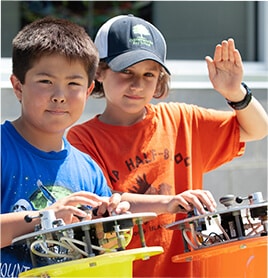
Whether we like to admit it or not, our lives are filled with luxuries. While it’s not necessarily a bad thing to live a comfortable and relatively carefree life, we often take for granted just how lucky we are. It can be challenging as a parent to teach their children about the importance of gratitude when it’s their responsibility to provide them with everything they need. But there’s a difference between sheltering and spoiling – two very different meanings that children can mistake as a privilege.
With the holiday season right around the corner there’s no better time to start practicing acts of gratitude. Here are a few examples of how we can instill gratitude into our daily lives.
Set a Good Example
Even if you think about this outside the context of just gratitude, we should always be trying to set a good example or be a role model for our children or peers. Children in particular pick up the majority of their tendencies from their parents/guardians at home. Simple ways to include gratitude into the daily hustle and bustle of life is as easy as saying ‘thank you’ when someone does a task for you such as making dinner, setting the table or cleaning the dishes.
As a parent you should help teach your children how to be grateful by showing them how much you appreciate everything they do for you. Maybe they painted you a picture in art class – put it on the fridge. Or picked you some flowers in the yard – put them in a vase on the counter and be sure to articulate how grateful you are for them. These little acts of gratitude go a long way towards making your children more appreciative of the people around them.
2. The Gratitude Jar
You might have heard of this one before, but it’s an excellent exercise for everyone and perfect for helping to instill thankfulness and gratitude. Essentially all you’ll need is a jar and some pieces of scrap paper. Every day have each member of your family or whomever tear off a tiny piece of paper, write down something they’re grateful for and then drop it in the jar. You can even take it one step further and challenge everyone to write down something they’re grateful about that happened to them that day. When the jar is full, empty it and reflect on everything that you’ve all been grateful about over the past month or so.
3. Good Morning/Night Gratitude’s
It’s been said that by practicing gratitude as soon as we wake up in the morning and fall asleep at night can have a huge boost on our overall serotonin (happiness) levels. This is a really simple exercise that works wonders. Before you fall asleep at night, think about something that happened to you during the day that you might not have appreciated in the moment – maybe someone held a door open for you or offered to give you a ride home. Take a moment to reflect and appreciate that.
Likewise, when you wake up in the morning, think of something that you’re grateful for – maybe you can already smell breakfast being cooked for you or if you want to take it deeper, appreciating the fact that you slept in a comfy warm bed. Whether it’s big or small, gratitude is an important practice for all of us.
Practicing Gratitude at Camp
On the surface you might not think of summer camp as the ideal place for someone to learn the value of gratitude, but here at AstroCamp gratitude is one of our core principles. Summer camp is a luxury and while not everyone has the opportunity for this luxury, AstroCamp aims to teach the importance of gratitude and appreciating everything we have in life. We try to live life to the fullest and being grateful for what we have is a significant part of camp life.
